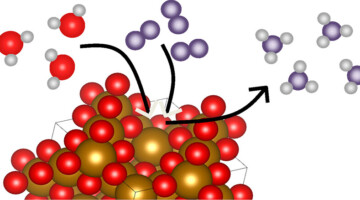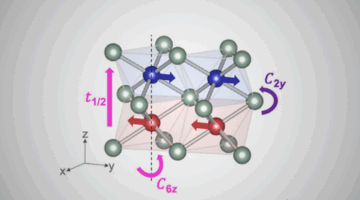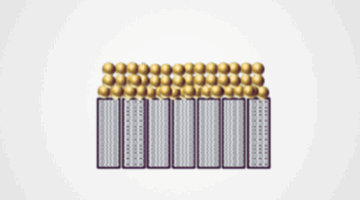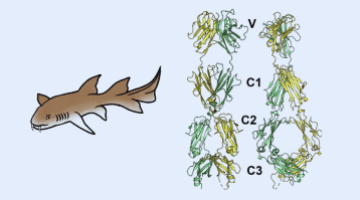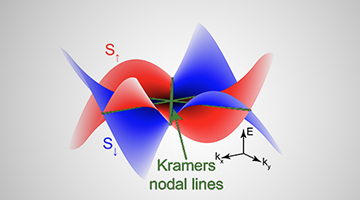Ammonia is a critical ingredient in many important industrial and agricultural applications. The Haber–Bosch process is the primary process for large-scale ammonia production. A new study uses an experimental–theoretical approach to uncover how interfacial chemistry at the magnetite–water interface drives ammonia synthesis under ambient temperature and pressure. Read more »![]()
![]()
All News & Updates
The Quest for an Altermagnet
Researchers determine the unique electronic structure of altermagnets, which offers numerous benefits in creating energy-efficient devices based on spin-polarized electron currents. Understanding how altermagnetism works could contribute to the development of next-generation memory, logic, or sensing devices that are faster and consume less power. Read more »
Dula Parkinson Receives the 2025 Tim Renner User Services Award
In celebration of Dula Parkinson’s work, the ALS Users’ Executive Committee presented him with the 2025 Tim Renner User Services Award for his commitment to providing outstanding support at the ALS and helping users succeed in their research. Read more »
Characterizing Membrane Fouling with Operando Experiments
Membrane filtration offers a cost-effective, energy-efficient approach to purify and desalinate water, but fouling limits the performance of these devices. A new study explored the new experimental design that allows one to study the dynamic fouling process in real time to improve the field’s understanding of how materials deposit, accumulate, and/or crystallize on the membrane’s surface. Read more »![]()
![]()
Sharks Shed Light on Origins of Adaptive Immune System
A team of researchers identified the three-dimensional structure of a protein expressed by a gene of a modern nurse shark that is proposed to be a close homologue to a gene that, more than 500 million years ago, gave rise to the adaptive immune system shared by all vertebrates. By understanding the emergence and evolution of the immune system, researchers may advance work in immunology, genetics, and biotechnology.
Read more »![]()
![]()
Martin Kunz, Nobumichi Tamura, and Simon Teat Receive 2025 Shirley Award
The ALS Users’ Executive Committee recognized beamline scientists Nobumichi Tamura, Martin Kunz, and Simon Teat as the 2025 Shirley Award recipients. At the recent User Meeting, they presented a talk on their development of the Sector 12 hard x-ray diffraction program and the cold cases they’ve been able to solve. Read more »
Greg Hura, SIBYLS Team Receive Halbach Award
Greg Hura and the Structurally Integrated BiologY for the Life Sciences (SIBYLS) team received the 2025 Klaus Halbach Award for Innovative Instrumentation at the recent 2025 User Meeting “for their pioneering work in developing the time-resolved, high-throughput, small-angle x-ray scattering (SAXS) technique at Beamline 12.3.1.” Read more »
Designing Quantum Materials for Future Electronics
Researchers bring theory into practice and confirm a new material’s characteristics at the ALS. The study opens new opportunities to design a substance that renders extra “handles” on the electron—not just its charge, but its spin and valley—so we can build computers that are faster, cooler, and more energy-efficient compared to traditional electronics. Read more »
Guiliang Xu to Receive 2025 Early Career Award
Guiliang Xu is the 2025 winner of the Early Career Award. The Users’ Executive Committee recognizes his work on synchrotron-based characterization of battery materials. Read more »
Berkeley Lab Director Witherell Retirement, June 2026
Dr. Michael S. Witherell announced his intention to retire in Spring 2026 from his position as director of Lawrence Berkeley National Laboratory after nearly a decade of service. Witherell’s leadership has strengthened the Lab’s position as a world-leading institution for breakthrough science and energy solutions for the nation. Read more »
